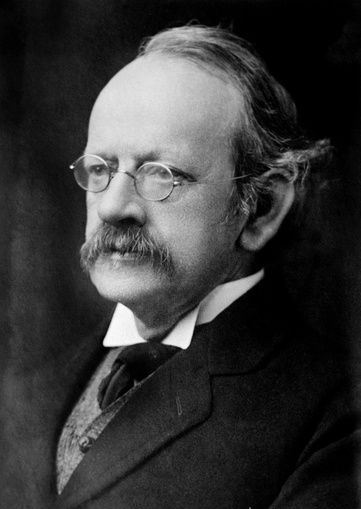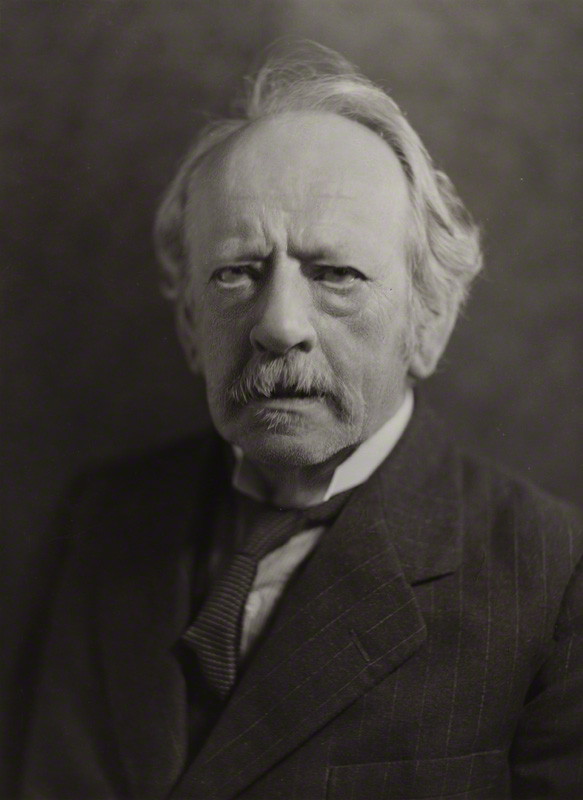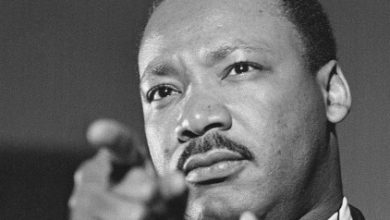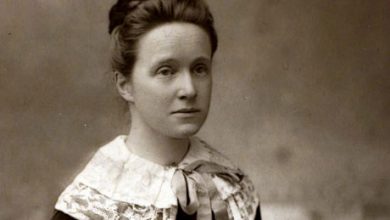J.J. Thomsan : Discovery of Electron
J.J. Thomson (Joseph John Thomson) was born in Cheetham Hill (a suburb of Manchester) on December 18, 1856. He is not still alive today. He went to Owens College in Manchester, in 1870. In 1876, he entered Trinity College in Cambridge as a minor scholar. Thomson studied mathematics and physics. He remained a member of Trinity College for the rest of his life and became a Lecturer in 1883 and a Master in 1918. In 1890, he married Rose Elisabeth and they had one son, (now Sir George Paget Thomson) and one daughter. J.J. Thomson died on August 30, 1940.
Quick facts

FULL NAME : Sir Joseph John Thomson
FAMOUS AS : Physicist, Nobel Prize Winner
NATIONALITY : British
BORN ON : 18 December 1856 AD
BIRTHDAY : 18th December
DIED AT AGE : 83
SUN SIGN : Sagittarius
PLACE OF BIRTH : Manchester, Lancashire, UK
DIED ON : 30 August 1940 AD
PLACE OF DEATH : Cambridge, UK
Royal Medal (1894)
Hughes Medal (1902)
Major Works
J. J. Thomson’s most important work centred around the research on cathode rays that led to the discovery of the electron and he won the Nobel Prize in Physics in 1906 for this path breaking discovery.
Early Life and Carrier
Joseph John Thomson, who was always called J.J., was born in Cheetham Hill, England, near Manchester, in 1856. His father was a bookseller who planned for Thomson to be an engineer. When an apprenticeship at an engineering firm couldn’t be found, Thomson was sent to bide his time at Owens College at the age of 14. In 1876, he received a small scholarship to attend Trinity College at Cambridge to study mathematics.
Thomson worked in the Cavendish Laboratory after graduation, under the tutelage of Lord Rayleigh. He quickly earned a membership in the prestigious Royal Society and was appointed Rayleigh’s successor as the Cavendish Professor of Physics at the age of 28. He was both respected and well-liked, and students came from around the world to study with him.
Discoveries
J.J. Thomson discovered electrons and noticed that an atom can be divided. Also, he concluded atoms are made of positive cores and negatively charged particles within it. He developed the Plum Pudding Model before the atomic nucleus was discovered. This model shows that the electrons are surrounded by a “pudding” of positive charges to balance the negative charges. Today, J.J. Thomson’s discoveries have helped people to have a better understanding of the atom and its generic makeup.
Death
Prior to the outbreak of World War I, Thomson made another groundbreaking discovery: the isotope. He died on August 30, 1940, and was buried in Westminster Abbey, close to Isaac Newton.
Awards and Achievements Of Thomson
-
Thomson won the Royal Medal in 1894.
-
The Royal Society of London awarded J. J. Thomson the Hughes Medal in 1902.
-
In 1906, he won the Nobel Prize in Physics for his work on the discovery of the electron.
-
The Franklin Institute awarded him the Elliott Cresson Medal in 1910 and 12 years later the same institute gave him the Franklin Medal.
-
The Royal Society awarded him the Copley Medal in 1914 and a year later the Royal School of Arts awarded him the Albert Medal.
-
In 1918, Thomson was made a ‘Master of Trinity College’.
Quotes and Sayings by J. J. Thomson
To the electron: May it never be of use to anyone
The difficulties which would have to be overcome to make several of the preceding experiments conclusive are so great as to be almost insurmountable.
As we conquer peak after peak we see in front of us regions full of interest and beauty, but we do not see our goal, we do not see the horizon.
Some Unknown Facts About J. J. Thomson

- Joseph John Thomson was born in Manchester, England and was the eldest son of a bookshop owner.
- He became a Fellow of Trinity College in 1881 and received his MA with honors there in 1883.
- On 12 June 1884 he was elected Fellow of the Royal Society and on December 22 of that year became Cavendish Professor of Physics at the University of Cambridge.
- In 1887 he measured the heat generated by cathode rays and found that they were 1000 times lighter than the hydrogen atom and that their mass was the same as that of the atom from which they were generated.
- In 1888 he published Applications of dynamics to physics and chemistry in which he stated the mathematics of the transformation of energy.
- In April 1897 he discovered that cathode rays could be defected by a magnetic field and that their fluorescent path was the same regardless of the material or gas used.
- In 1906 he demonstrated that hydrogen had only one electron per atom.
- He designed instruments to pas cathode rays through a magnetic field and he was the first to determine the mass-to-charge ratio of cathode rays.
- In 1908 he was knighted for his contributions to science and in 1912 he received the Order of Merit.
- In 1918 he became Master of Trinity College and held the post until his death.
Books by Thomson
J.J. Thomson published 13 books and more than 200 papers in his lifetime.
The Corpuscular Theory of Matter
The Atomic Theory
Conduction of Electricity Through Gases




